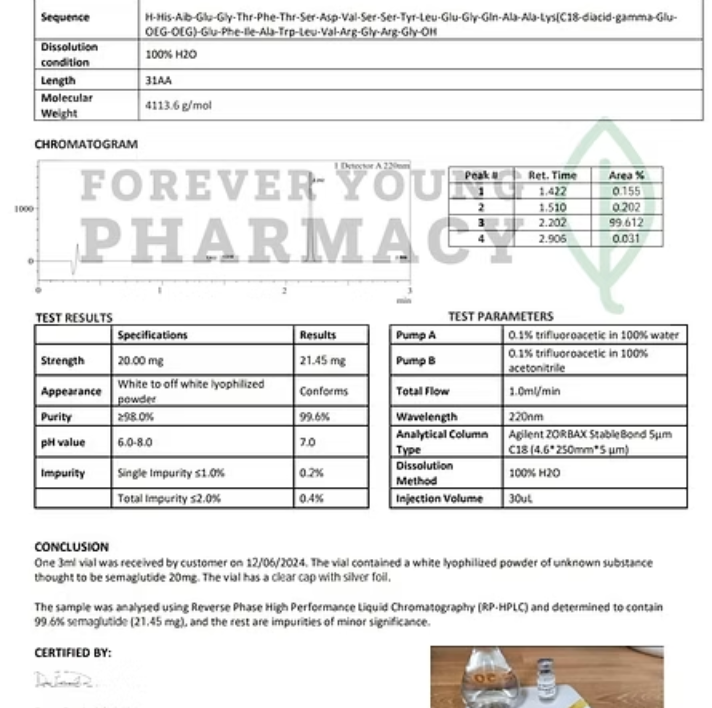⚠️ Product Usage: This PRODUCT IS INTENDED AS A RESEARCH CHEMICAL ONLY. This designation allows the use of research chemicals strictly for in vitro testing and laboratory experimentation only. All product information available on this website is for educational purposes only.
GLP- 1
GLP- 1
Couldn't load pickup availability
GLP-1
GLP-1 is a glucagon-like peptide-1 (GLP-1) receptor agonist that has garnered significant interest as a research compound due to its ability to regulate blood sugar, promote weight loss, and influence metabolic pathways. Originally developed for the treatment of type 2 diabetes, GLP-1’s unique properties have expanded its potential into research areas such as obesity, cardiovascular health, and neuroprotection. Its long-acting nature and multifaceted effects make it an important tool for studies focused on metabolic disorders and therapeutic interventions.
Key Benefits of GLP-1 for Research:
• Glucose Regulation and Insulin Sensitivity:
GLP-1 mimics the action of the natural GLP-1 hormone, which plays a key role in glucose metabolism. By enhancing insulin secretion in response to meals, lowering glucagon secretion, and slowing gastric emptying, GLP-1 helps control blood sugar levels. This makes it highly relevant for research into type 2 diabetes, insulin resistance, and glucose homeostasis.
• Significant Weight Loss Effects:
One of GLP-1’s most notable benefits is its ability to promote weight loss. It reduces appetite by acting on the brain’s hunger centers and slows digestion, leading to lower caloric intake. This property has made GLP-1 a leading candidate in research on obesity, weight management, and metabolic health, providing valuable insights into pharmacological weight-loss therapies.
• Cardiovascular Health:
In addition to its metabolic benefits, GLP-1 has demonstrated cardiovascular protective effects. Studies have shown that it can reduce the risk of major cardiovascular events, such as heart attack and stroke, in individuals with type 2 diabetes. Its potential role in reducing cardiovascular risk factors, including blood pressure and cholesterol, makes GLP-1 relevant in cardiovascular research.
• Potential Neuroprotective Effects:
Emerging research suggests that GLP-1 may have neuroprotective properties, as GLP-1 receptors are also expressed in the brain. By potentially reducing inflammation and oxidative stress, GLP-1 has attracted interest in research exploring its effects on neurodegenerative diseases like Alzheimer’s and Parkinson’s disease. Its role in preserving cognitive function is being investigated in studies on aging and brain health.
• Appetite Control and Energy Balance:
GLP-1’s ability to modulate appetite through its action on the central nervous system, particularly in the hypothalamus, opens up avenues for research on energy balance and eating behavior. Studies focused on understanding the neural and hormonal mechanisms underlying hunger and satiety can benefit from the use of GLP-1 in controlled settings.
• Long-Acting Mechanism:
As a long-acting GLP-1 receptor agonist, GLP-1 offers the advantage of weekly dosing, which allows for sustained glucose control and weight management over longer periods. This extended action makes it suitable for long-term research studies investigating chronic conditions such as type 2 diabetes, obesity, and cardiovascular diseases.
• Exploration of Combination Therapies:
GLP-1’s efficacy in both glycemic control and weight loss has made it an attractive candidate for combination therapies. Researchers are exploring its potential when combined with other metabolic or weight-loss agents to assess synergistic effects. This makes GLP-1 relevant for studies aiming to optimize therapeutic interventions for metabolic syndrome and related conditions.
For research purposes only
Not for human consumption
Share






